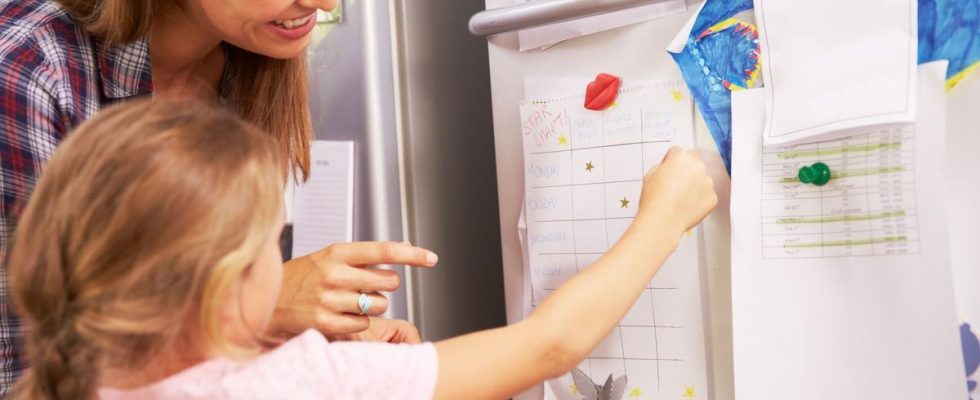Published on
Updated
Reading 2 min.
Do you want your child to acquire a little more autonomy on a daily basis, and why not take part in household chores? A very simple tool to implement has proven itself to motivate children.
Making the bed, brushing their teeth, helping their parent set the table… Do you feel like you’re constantly repeating yourself to teach your child to participate in everyday tasks? But have you thought about formalizing this on a medium for greater clarity? This is what the motivation table offers, which seems to satisfy many parents.
A table to count good deeds
The motivation (or reward, or behavior, depending on what you want to value) table is a table on which the child’s tasks to be carried out, or his routine (morning, evening) are listed in black and white. day and for the whole week. With a subtlety that weighs on simple reminders from parents: when the task is correctly carried out, the child then sticks a sticker, or a star, or even a badge, to validate the experience. Even better, at the end of the day, when the child has validated his routine over the week, he may be entitled to a reward, such as choosing his favorite meal, inviting a friend, etc. The goal is not to find an expensive reward, but to find the one which will please the child and which will motivate him.
According to the testimonies on the web and in child psychology books, this would work much better than repeating once again “Vto brush your teeth! “
The child’s efforts are thus valued
The other advantage of this technique is that it adapts to the age of the child without problem. So, for a little one (2-3 years old), you can write down the stages of potty training, or the fact of leaving their pacifier after a nap to encourage them. Older children can see more complex concepts (preparing their football gear, making their bed, putting their dirty clothes in the laundry basket, etc.) to further boost their autonomy.
The fact that the result is visual (checked boxes or stickers) is an excellent way to recognize the efforts made, and to become aware of your own progress, without having your parent on your back.
And when certain boxes are not checked, it becomes easier to have a discussion on the subject in front of a visual medium.
The limits of the technique
The motivation board is therefore a bold springboard to help your child. However, it is not a magic wand to resolve the sharing of tasks and two limitations should be noted:
- The requested tasks must be achievable alone. It is therefore useless to include too many tasks, which could make the objective unattainable and lead to a feeling of failure rather than success;
- The table has a limited useful life. It is therefore recommended to change the objectives set if you wish to challenge your child a little more.
As for the shape chosen, be aware that many ready-made models can be ordered on the internet. But you can just as easily create your own personalized painting, with a minimum of imagination.

